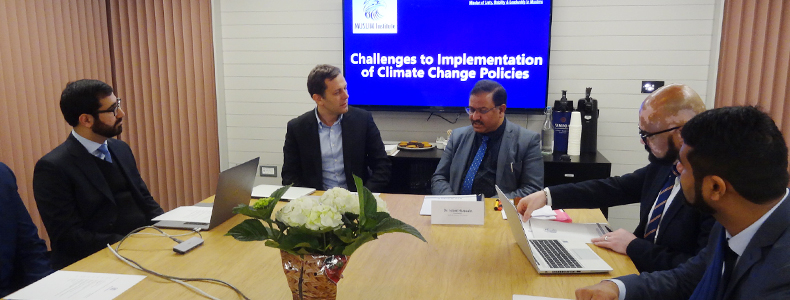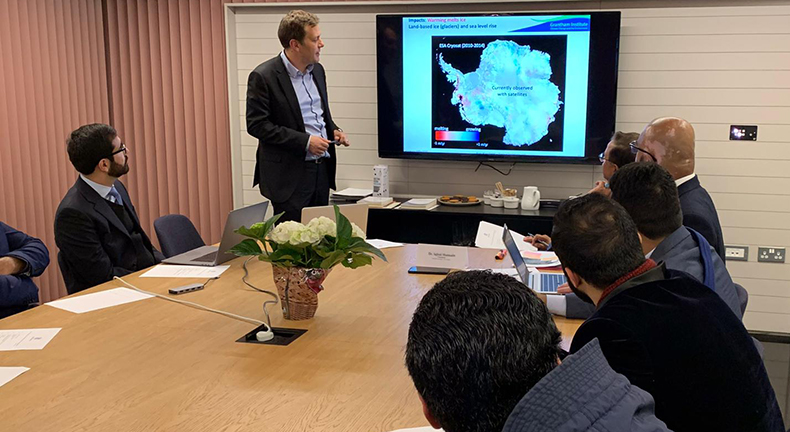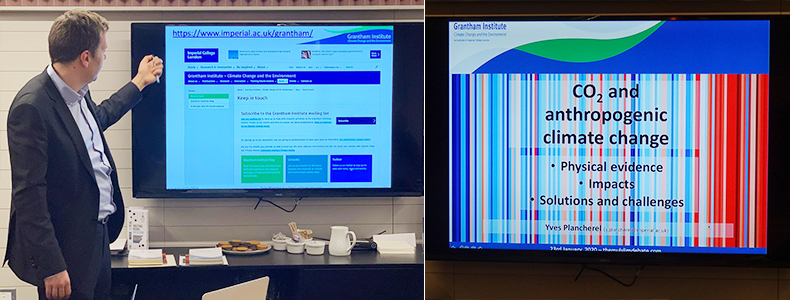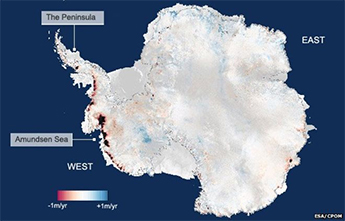
|
MUSLIM Institute UK Chapter organised a Round Table Discussion “Challenges to Implementation of Climate Change Policies” on Thursday Jan 23, 2020; at the Record Hall London. Dr. Yves Plancherel Lecturer Grantham, Institute- Climate Change & the Environment and Dr. Iqbal Hussain President MUSLIM Institute UK Chapter shared their views on the occasion. Mr. Rao Ali Khan, Research Associate MUSLIM Institute gave the opening remarks. Mr. Ali Iftikhar Programme Manager, The MUSLIM Debate, moderated the proceedings of the discussion. |
||||||
|
Extreme weather events are now clearly attributable to climate change. Record-breaking extremes in the northern hemisphere with flooding, heatwaves and wildfire like recently seen in Australia, show that climate change is taking place. We have reached a critical point where our decisions have implications not only for us but also for our future generations. Few examples are mortality of coral reefs and ice loss from West Antarctica. If global warming continues, these systems can reach the point where they can collapse rapidly in an unstoppable manner. Due to the increasing concentration of greenhouse gases, the global average temperature is rising. If we move to 2?C warming, it can lead to critical hothouse earth stage which can be a danger to life not only for the human being but also for life on Earth as a whole. The water level is rising as the ice is melting rapidly owing to increasing temperature. The rate of ice loss from Antarctica is increasing. Satellite data confirms the rate of increasing sea level is accelerating. If temperature rise can be limited, it can make a lot of difference to the lives of people. Global warming clearly impacts health. The increasing heat leads to more diseases born by infections like Malaria which require humid temperature.
Undoubtedly, anthropogenic activities are among other major reasons for climate change. Anthropogenic carbon emissions per capita are ~5 tons/year. The concentration of CO2 is increasing in the environment. The current level of CO2 on earth is comparable to the CO2 level on earth 500 million years ago in the Palaeozoic era. Current rates of CO2 increase are the fastest and greatest ever seen. Increase in CO2 concentration in the environment creates global warming due to increased temperature. When sun rays pass through the atmosphere some rays are reflected back into space thus allowing the earth to cool while some rays are trapped by CO2 present in the atmosphere. The increased amount of CO2 means more heat to be retained and the temperature to increase. |
||||||
|
CO2 concentration is not only detrimental to the atmosphere but also for oceans. More CO2 in the atmosphere means more CO2 will be absorbed in ocean water. Oceans take up ~31% of total anthropogenic CO2 emissions whereas 45% remains in the atmosphere and 24% is absorbed by the land. This increased carbon dioxide concentration results in ocean acidification. Ocean acidification, paired up with other climate impacts like warming waters, deoxygenation, melting ice, and coastal erosion, pose real threats to the survival of many marine species. Ocean acidification results in the reduction of carbonate ions. Clams, mussels, crabs, corals, and other sea life rely on carbonate ions to grow their shells and thrive. Coastal and marine ecosystems are under tremendous stress from climate change. Moreover when the warming of the upper ocean happens, stratification of the ocean results. It means oxygen has more resistance penetrating into the ocean. And that is called the de-oxygenation whereas sea life needs oxygen.
Another horrifying impact of global warming is the melting of ice and the rise in sea levels. When temperatures rise and ice melts, more water flows to the seas from glaciers and ice caps, and ocean water warms and expands in volume. This combination of effects has played a major role in raising the average global sea level between four and eight inches in the past hundred years. A continuation or acceleration of that trend has the potential to cause striking changes in the world's coastlines. Melting sea ice also changes the Earth albedo a darker planet absorbs even more heat, which melts more ice. It is the fact that even though it's a global problem, individuals can have an impact and drive change. Everybody needs to reduce his little bit of emission, and eventually, it adds up to a large decrease. In order to reduce emissions at personal level we need to consume less meat, milk, cheese and butter; eat locally sourced seasonal food; waste less; insulate homes; use a washing line instead of a tumble dryer; drive electric cars, walk or cycle; take trains and buses instead of planes; demand low carbon in consumer products. |
||||||
 Hall view during the round table discussion. |
||||||
|
||||||
 Dr. Yves Plancherel giving presentation. |
||||||
|
Options to remove carbon dioxide from the atmosphere are limited. Therefore there is an emphasis to reduce the production rather than to bring down the carbon dioxide which has been emitted already. Pathways to limit warming to 1.5?C require at least cutting half the emissions by 2030. Therefore, a decade is available to cut the emission of carbon dioxide taking place at the moment. A large part of emitting CO2 is due to the cities and energy systems that are in use at the moment. The cities and energy systems are playing a pivotal role and there is already considerable momentum in the energy sector and major shifts towards very low emission with the right support may be seen. Stronger policy measures would reduce climate risks. Climate actions to limit warming to 1.5?C can save the world 20 trillion US dollars and likely benefit a vast majority of the global population. Phasing out fossil fuels subsidies would reduce global carbon emission and strengthen public budgets. However, reforms should consider possible adverse effects. A comprehensive and dynamic portfolio of policies including standards, regulations, incentives and carbon pricing would effectively support and accelerate low carbon transition. First is to increase the carbon price. Cost of things that emit a lot of carbon should be increased which will also motivate the innovation to reduce the cost. Second thing is to reduce fossil fuel subsidies in order to create an equal playing field with every other emerging technology. Advanced countries having technical facilities and budget at their expense should take lead role in implanting the policies. In order to combat this horrifying catastrophe for entire life on the plant we need to implant the policies at the governmental level and also will have to adjust our lifestyle in such a manner to reduce our carbon footprint. |
||||||
Download pdf Newsletter Share


